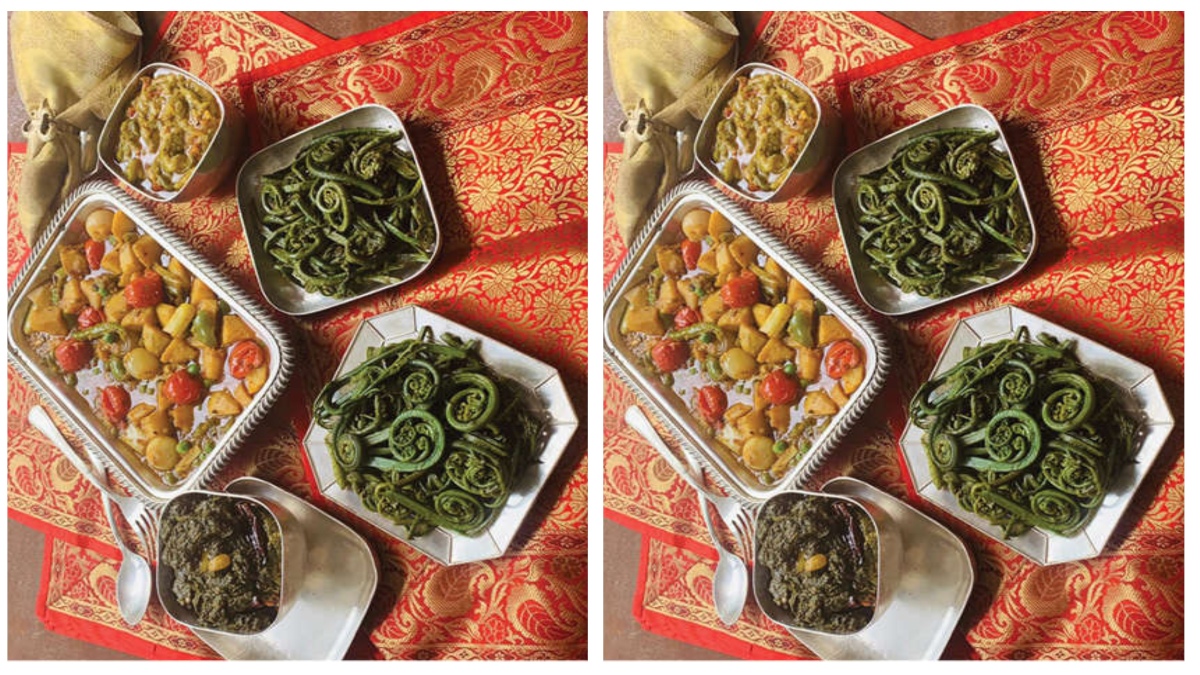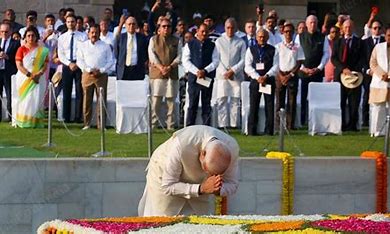
 Julfi Swari
Julfi Swari Rohini Rana at Baber Mahal
Rohini Rana at Baber Mahal The cover of the book, ‘The Rana Cookbook’
The cover of the book, ‘The Rana Cookbook’ An array of typical Rana non-vegetarian dishes.
An array of typical Rana non-vegetarian dishes. Rohini Rana
Rohini Rana

Typical vegetarian dishes

Nepali spices
The Ranas of Nepal who ruled this Himalayan country for over 104 years, giving the nation nine statuesque Prime Ministers have a close, historic link to India, especially the faction of the family that owes its lineage to the master statesman Chandra Shumsher Jung Bahadur Rana. A forward thinker, he was responsible for the abolition of slavery and the Nepal-Britain Treaty of 1923, which recognised Nepal as an independent nation. His present-day scions, residing in the stunning Baber Mahal, Kathmandu, parts of which is now a luxury hotel, have one thing in common. Many of their daughter-in-laws’ hail from princely India and most of their daughters are married into great Maratha families of Jaisalmer, Jammu & Kashmir, Gwalior, Patna, and Bolangir etc. While the daughters blended into their families’ culture, the girls from India too have adapted to the Rana way of life.
One such bahu is the petite and pretty Rohini Rana, married to General Gaurav Shamsher Jung Bahadur Rana who served as the Chief of Army Staff in Nepal. Hailing from Awagarh, Uttar Pradesh she has written a delectable book, chronicling for posterity some of the most iconic Rana recipes that she learnt after coming to this hill kingdom 45 years ago. ‘Rana Cookbook: Recipes from the palace of Nepal’ is not just a visual treat but a masterpiece in precision, making cooking these heritage dishes a veritable cakewalk.
The Ranas, known for their European influenced lifestyle, the tiaras, the wedding gowns, the decadent high teas and silver service dinners, held within their Stucco structured palaces inspired by French and British architecture, also created a rich culinary heritage, one that thrives through the ages within their homes and the many Indian homes where the daughters got married. Hence, an Anda Sandko can even be found in Jhabua where one of the daughters got married. And Meghna Singh Deo, Rohini’s daughter, married to Kalikesh Singh Deo in Patna Bolangir has taught the famous Julfi Swari to her cooks in Odisha. (A jalebi fried in desi ghee, it is encased in wafer-thin pooris made from white flour and served as a savoury at breakfast and high tea)
For Rohini, a voracious cook herself, who enjoys, “rustling up every kind of meal,” the inspiration to cook the indigenous cuisine came from her husband who is such an epicure. “For me, food became a talking point in my new home where everyone was as much a foodie as the family in India.” Rohini recalls spending idyllic times in the Awagarh summer home in Nainital where tables were, “piled up with food and the family lived from one meal to the other.”
It was her husband’s nanny Chiniya Champa (whose father had worked in Baber Mahal) who “lovingly initiated me into the kitchen secrets of the Rana household. She painstakingly taught me each dish with all its nuances.” As a result, as many as 90 dishes in the book are the ones she learnt from Chiniya and the rest 40 are a product of Rohini’s culinary journey. Each recipe, however, is researched from the kitchen legacy that thrived during the regime of the nine Rana Prime Ministers who ruled the nation from 1846 to 1951.
Rana cuisine is a coming together of Mughal influences and Nepalese cooking techniques. History suggests that post the mutiny, the Ranas brought in khansamas from Lucknow who worked closely with the Hindu chefs of Baber Mahal to create unique cooking styles. While the Mughals brought in the tradition of ornately embellishing the food, the Nepalese kept to their core technique of stir-frying everything to later temper it on top with Himalayan herbs like jimbu (Aalium Chives), timur (Sichuan pepper), and tama (fermented bamboo shoots). “In India, our curries are richer as we start each dish by frying the masalas in oil and ghee. In Nepal on the contrary, most dishes are either stir-fried or steamed and then giving a ‘jhol’ (tempering) with sharp mustard oil and various Himalayan herbs and spices.”
The book delves into the culinary history of Rohini’s family as she goes on to share immaculate, easy to cook recipes of some classic dishes. She breaks her book into carnivorous cooking stories in chapters titled Bandel, Chara, Macha, and Jangali Janawar etc. She talks as much of vegetarian cooking traditions in chapters that list the lentil preparations of Nepal, their tarkaris, achars and Guliyos (sweet dishes). Indeed a treasure for food lovers, ‘Rana Cookbook: Recipes from the palace of Nepal’ is a manifestation of Rohini’s belief and that of many other royals that the kitchen culture of the kings must be as preserved as their palaces and jewels. This is the real gem of living legends that thrive still within their families and must be preserved with tender loving care.















